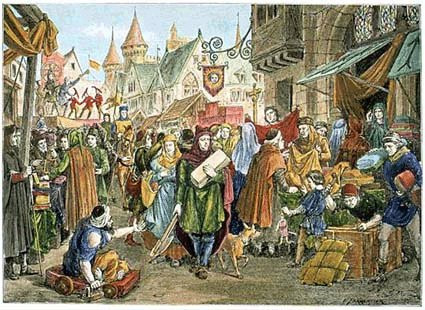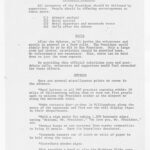
From Ancient Ballads to a Beloved Folk Song: Tracing the Origins of Scarborough Fair
The roots of “Scarborough Fair” stretch back centuries, intertwining with the mists of time and oral tradition. Musicologists believe the song is derived from a much older Scottish ballad known as “The Elfin Knight,” also cataloged as Child Ballad #2. “The Elfin Knight” dates back to at least 1670, and potentially even earlier, highlighting the song’s deep historical lineage. This ancient connection explains the existence of numerous variations of the song, each evolving through generations of singers and storytellers. The version we recognize today as “Scarborough Fair” is one of the most popular iterations, often performed as a duet, emphasizing its call-and-response nature. The enduring appeal of “Scarborough Fair song” lies in its ability to bridge the past and present, carrying echoes of medieval storytelling into modern music.
Scarborough Fair: A Medieval Marketplace of Music and Merriment
To truly understand the context of the “Scarborough Fair song,” it’s essential to explore the historical Scarborough Fair itself. Scarborough, a coastal town in North Yorkshire, England, boasts a history dating back to around 966 AD. However, it was during the Middle Ages that Scarborough gained prominence as a trading hub, largely due to its famed Scarborough Fair. Established by a royal charter in 1253, this fair was no ordinary market; it was a sprawling six-week trading festival that drew merchants from across Europe. From August 15th (Assumption Day) to September 29th (Michaelmas Day), Scarborough transformed into a vibrant center of commerce and culture. Merchants engaged in barter, exchanging goods amidst music, food, and lively festivities. For 500 years, from the 13th to the 18th centuries, Scarborough Fair thrived, becoming a significant annual event that is immortalized in the “scarborough fair song.” While its commercial importance waned in the 17th century due to increased taxation and competition, the spirit of the medieval fair persists, with modern-day medieval-themed fairs held in Scarborough, keeping the historical connection alive.
Unpacking the Riddle: Impossible Tasks and Hidden Meanings in Scarborough Fair Lyrics
The lyrics of “Scarborough Fair” present a captivating exchange of impossible tasks. A young man instructs the listener to ask his former love to perform a series of seemingly insurmountable feats – making a cambric shirt without seams or needlework and washing it in a well where no rain has fallen. Only upon completion of these tasks, he declares, will she be considered his true love. Often sung as a duet, the song then introduces the woman’s perspective, as she, in turn, sets equally impossible tasks for her lover, promising the seamless shirt upon their completion.
This exchange of impossible tasks has led to numerous interpretations of the song’s underlying meaning. Some theories suggest a connection to historical events, such as the Great Plague of the Middle Ages. However, a more prevalent interpretation views the tasks as riddles. In this light, the seemingly impossible feats become solvable through clever wordplay or metaphorical understanding. For instance, “plough it with a ram’s horn, and sow it all over with one peppercorn” could be interpreted symbolically, perhaps even carrying a suggestive, metaphorical meaning. The riddle-like nature of the tasks adds layers of intrigue to the “scarborough fair song,” inviting listeners to decipher its hidden messages.
Parsley, Sage, Rosemary, and Thyme: The Symbolic Language of Herbs in Scarborough Fair
The recurring refrain, “Parsley, sage, rosemary, and thyme,” is perhaps one of the most recognizable and debated elements of the “Scarborough Fair song.” These herbs are not merely poetic additions; they carry rich symbolic weight and have been interpreted in various ways throughout history.
One popular interpretation links the herbs to an old witches’ love potion, suggesting a medieval context where herbal remedies and folklore were intertwined. Each herb is assigned symbolic meaning: parsley for comfort, sage for strength, rosemary for love, and thyme for courage. This interpretation suggests that the herbs represent the complex emotions and challenges within a relationship, offering a symbolic language to express longing, resilience, and enduring affection.
Another perspective connects the herbs to more somber themes, associating them with death and protective charms. Historically, these herbs were linked to warding off the “evil eye” and were even used by plague doctors who believed they could mask the smell of death and decay. In this context, the refrain might evoke a sense of vulnerability, protection, or even mourning within the narrative of the song.
A more pragmatic, though less romantic, interpretation suggests that the refrain simply served as a mnemonic device or filler to compensate for forgotten lyrics in the oral tradition. However, the enduring popularity and symbolic richness associated with parsley, sage, rosemary, and thyme argue for a deeper significance than mere filler. Regardless of the precise intended meaning, the herbs undeniably contribute to the song’s mystique and evocative power, making the refrain an integral part of the “scarborough fair song” experience.
The Enduring Legacy of Scarborough Fair Song
“Scarborough Fair” has been interpreted and reinterpreted by countless artists, each bringing their own nuance to the timeless ballad. While controversies may exist regarding specific renditions, the version by Simon & Garfunkel remains iconic, introducing the “scarborough fair song” to a wider audience and imbuing it with a sense of wistful beauty. Their arrangement, layered with harmonies and delicate instrumentation, captured the song’s inherent magic and cemented its place in popular culture.
From its ancient origins to its modern interpretations, “Scarborough Fair” continues to enchant and intrigue. It’s a song that invites us to delve into history, decode riddles, and appreciate the symbolic language of herbs. The enduring appeal of “scarborough fair song” lies in its ability to resonate across generations, carrying with it the echoes of medieval fairs, ancient ballads, and the timeless mysteries of love and longing.

